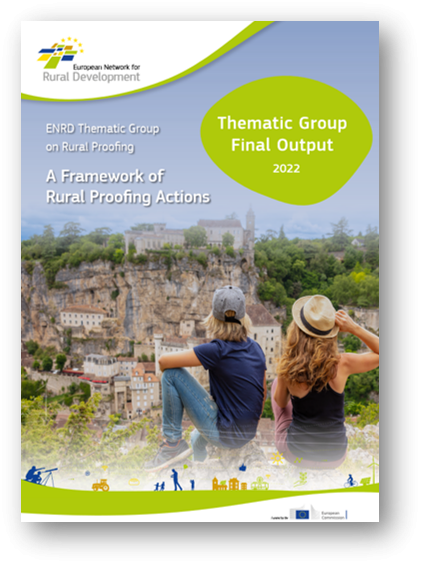What is rural proofing?
Rural proofing means reviewing policies through a rural lens, to make these policies fit for purpose for those who live and work in rural areas.
In practice, it considers, for policies in the making, the actual and potential, positive or negative, direct and indirect impacts and implications on rural jobs, development prospects, social well-being, equal opportunities for all and the environmental quality of rural areas and communities.
What did the European Commission commit to?
When adopting the rural vision, the European Commission committed to put in place a rural proofing mechanism as part of the “Better regulation” agenda, to assess the impact of major EU legislative initiatives on rural areas.
How is it done in practice at EU level?
To elaborate new legislation, Commission services follow “better regulation guidelines” and use the “better regulation toolbox”. The better regulation guidelines, revised in November 2021, foresee:
- Under “key concepts and principles”: the assessment of any significant impact on territorial and rural issues.
- Under “stakeholder consultation”: the gathering of evidence from various types of territories.
Services benefit from tools elaborated to guide them through their assessments, including:
- Tool 18 on identification of potential impacts and running territorial impact assessments necessity checks
- Tool 34 on Territorial impact assessment as such
- The ESPON Territorial impact assessment tool for methodological support
Some initiatives that do not introduce new rules or new funding instruments, such as communications, do not require impact assessments. For these, where relevant, Commission services are invited to explore implications for rural communities in more qualitative ways. Over 2022 and 2023, 15 initiatives have been flagged for this more qualitative rural proofing.
The Commission will keep using the rural proofing mechanism for its own regulatory process, progressively improving skills on integrating rural issues in EU policymaking across departments. Rural proofing will benefit from improving rural statistics and data and from developing the EU rural observatory.
What about rural proofing at national, regional and local levels?

Through the rural vision, the Commission also invited Member States to consider implementing rural proofing at national, regional and local levels. Some Member States already have experience to share while others are starting to reflect.
The European network for rural development (ENRD) has run a thematic group on rural proofing at national, regional and local levels in the first semester of 2022 to analyse past experience and built a framework for rural proofing.
Discover the ENRD framework for rural proofing actions.
The Committee of the regions also commissioned a study Rural proofing – a foresight framework for resilient rural communities.
The Commission will keep up dialogue with national and regional levels on the development of rural proofing mechanisms, building on Council conclusions on the LTVRA which call to strengthen rural proofing at all levels.
Rural proofing beyond the EU
Several organisations such as the Organisation for economic cooperation and development (OECD) or the World health organisation have developed an interest in rural proofing. Together they organised a workshop on Rural proofing for health as part of the OECD rural development conference in Cavan (Ireland).
The Commission will also keep interacting with international organisations on issues related to rural proofing.
More about OECD work on rural development
More about WHO work on rural health equity
